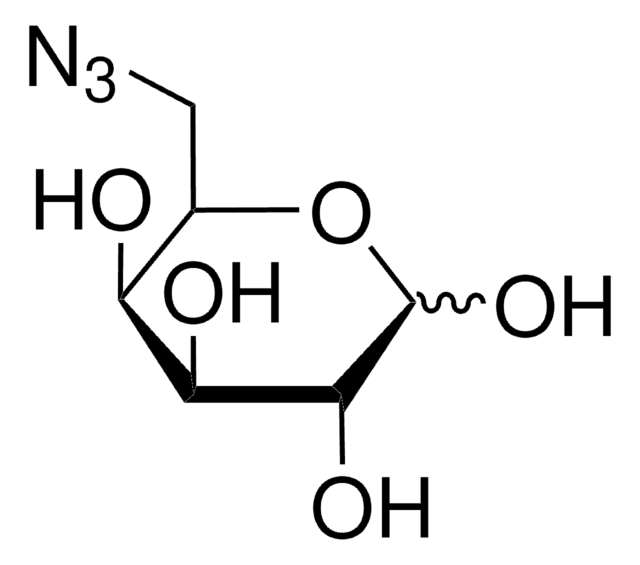900915
N-Azidoacetylgalactosamine-tetraacylated
Synonym(s):
Ac4GalNAz
About This Item
Recommended Products
form
powder or crystals
Quality Level
reaction suitability
reaction type: click chemistry
storage temp.
−20°C
SMILES string
[N+](=[N-])=NCC(=O)NC1[C@@H](OC([C@@H](C1OC(=O)C)OC(=O)C)COC(=O)C)OC(=O)C
InChI
1S/C16H22N4O10/c1-7(21)26-6-11-14(27-8(2)22)15(28-9(3)23)13(16(30-11)29-10(4)24)19-12(25)5-18-20-17/h11,13-16H,5-6H2,1-4H3,(H,19,25)/t11?,13?,14-,15?,16+/m0/s1
InChI key
HGMISDAXLUIXKM-SROHTVIFSA-N
Application
Storage Class
11 - Combustible Solids
wgk_germany
WGK 3
flash_point_f
Not applicable
flash_point_c
Not applicable
Choose from one of the most recent versions:
Certificates of Analysis (COA)
Don't see the Right Version?
If you require a particular version, you can look up a specific certificate by the Lot or Batch number.
Already Own This Product?
Find documentation for the products that you have recently purchased in the Document Library.
Customers Also Viewed
Articles
Choosing the right crosslinker for your biochemical or bioconjugation research can be challenging. Our selection guide can help you find the perfect match for your applications.
Explore the principles and applications of click chemistry in drug discovery, highlighting efficient reactions that streamline the synthesis of bioactive compounds.
Our team of scientists has experience in all areas of research including Life Science, Material Science, Chemical Synthesis, Chromatography, Analytical and many others.
Contact Technical Service










